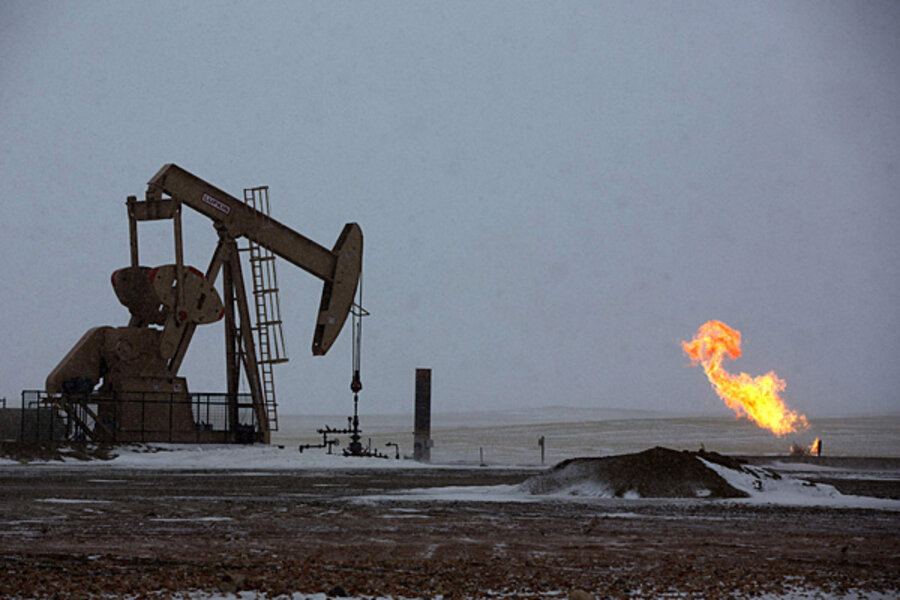US to be No. 1 oil producer, but it won't last
Loading...
The US is poised to become the world's largest oil producer beginning in 2015. But its reign will be fleeting as the Middle East reasserts itself two decades from now.
Why? America's oil boom won't last forever, according to an annual outlook released Tuesday by the International Energy Agency (IEA). And the technologies that have fueled that North American boom in shale rock formations won't be easily replicated in the rest of the world.
"The capacity of technologies to unlock new types of resources ... and to improve recovery rates in existing fields is pushing up estimates of the amount of oil that remains to be produced," reads the Paris-based agency's report. "But this does not mean that the world is on the cusp of a new era of oil abundance."
Such a pessmistic forecast may seem hard to believe, given that the US is producing oil today at levels not seen since the 1990s. Hydraulic fracturing and horizontal drilling, two advanced extraction techniques, have fueled a boom in shale oil and gas production across the US.
It's why the US is expected to lead the world in oil production between 2015 and the early 2030s, according to IEA. US oil imports will rapidly drop on increased production and greater consumer efficiency, pushing the country toward “meeting all of its energy needs from domestic resources by 2035.”
That's when the picture gets fuzzy. Some in the industry say that the shale oil and gas boom radically redefines how much oil and gas is recoverable across the globe. China leads the world in shale gas resources with an estimated 1,115 trillion cubic feet, according to the US Energy Information Administration. Russia stands to dominate in supplies of oil from shale, with an estimated 75 billion barrels in technically recoverable resources.
The key word is "technically." Shale resources are difficult and costly to extract, and many, including the IEA, do not expect the success in the US to be replicated elsewhere. While oil prices will continue to remain historically high, it won't be enough to compete with the Middle East's abundant supply of cheap, conventional oil.
"The Middle East, the only large source of low-cost oil, remains at the centre of the longer-term oil outlook," IEA's report reads. "The role of OPEC countries in quenching the world’s thirst for oil is reduced temporarily over the next ten years by rising output from the United States, from oil sands in Canada, from deepwater production in Brazil and from natural gas liquids from all over the world. But, by the mid-2020s, non-OPEC production starts to fall back and countries in the Middle East provide most of the increase in global supply."
More sustained change in energy will come on the demand side. Growing middle classes in China, India, Southeast Asia, and elsewhere are driving up demand for electricity and fuel. Emerging economies will account for more than 90 percent of global net energy demand growth between now and 2035, according to IEA.
The growth has significant consequences for climate change, as the energy sector currently makes up two-thirds of global greenhouse-gas emissions. Renewables are growing at record rates, and some countries have enacted policies to curb emissions, but most analysts suggest the efforts do not significantly alter the current trajectory of emission growth.
Energy-related carbon-dioxide emissions are projected to rise 20 percent by 2035, according to IEA, which leaves the world on track for a long-term average temperature increase of 3.6 degrees Celsius (6.5 degrees F.). That's above the internationally-agreed climate target of 2 degrees Celsius.
Increased US oil and gas production from shale rock formations will continue to dramatically alter the global energy landscape in the coming decade or two, according to an annual outlook released Tuesday by the International Energy Agency (IEA). But the rest of the world will struggle to replicate North America's costly, unconventional oil boom, IEA says, and the Middle East will remain top dog in the long term.








